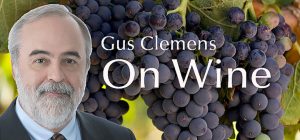There is a lot of information on a wine label. Some of it germane: producer, grape variety or type of wine, vintage.
Some you ignore like terms and conditions on websites and software. Some is irrelevant or misleading. “Contains Sulfites” is a warning searching for a threat. Many foods contain sulfites in greater quantity than wine. A single dried apricot has more sulfite than an entire bottle of wine.
Then there is ABV—alcohol by volume. Here is information that can be relevant and informative. But there is no assurance the number is accurate. In fact, it is a good bet it is not.
The Alcohol and Tobacco Tax and Trade Bureau dictates what goes on labels. They allow flexibility in ABV numbers—which is reasonable: labels are printed before the final wine is bottled and there are variations in wine lots. If the label lists ABV of 14% or lower, winery only has to be accurate within 1.5%. So etherial 12.5% pinot noir legally could be 14%. Or it could be 11%.
When the ABV score is more than 14% ABV, the allowed margin for error is 1%. That means a 15.5% ABV Napa cab—a common number—could be a shocking 16.5%. Or a tame 14.5%.
There are marketing reasons for certain ABV numbers. Some wineries believe people shy away from high alcohol, so they label lower. The magic number is 14%, which is why you see that—or 14.5% or 13.5%—on so many labels.
Finally, there is no reason to take ABV seriously because there is almost no oversight. There are more than 10,000 wineries making thousands upon thousands of wines. The TTB Alcohol Beverage Sampling Program typically checks only slightly more than 100 wine labels each year.
As a consumer, ABV can be meaningful. If the label says 15.5%, then expect that to be in a riper style than one labeled 13.5%. If the label says 14%, then you can consume a bit more than one labeled 16%. If four friends are sharing two bottles of wine, you can pair a 12% with a 14.5% and feel more secure than pairing two 16% bottles.
Tasting notes:
• La Bernarde Côtes de Provence Rosé “Hauts de Luc” 2018: Rich, substantial Provence rosé. $16-20 Link to my review
• Concha y Toro Marques de Casa Concha Cabernet Sauvignon Maipo Valley, Chile 2016: Tasty, significant cab at this price point. $22-25 Link to my review
Last round: The home gardener was so excited about the start of spring he wet his plants.

